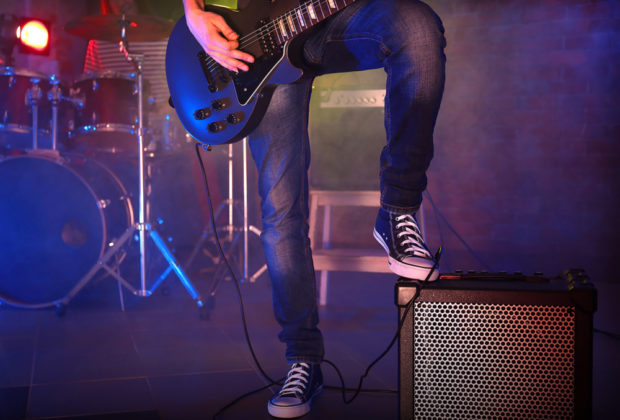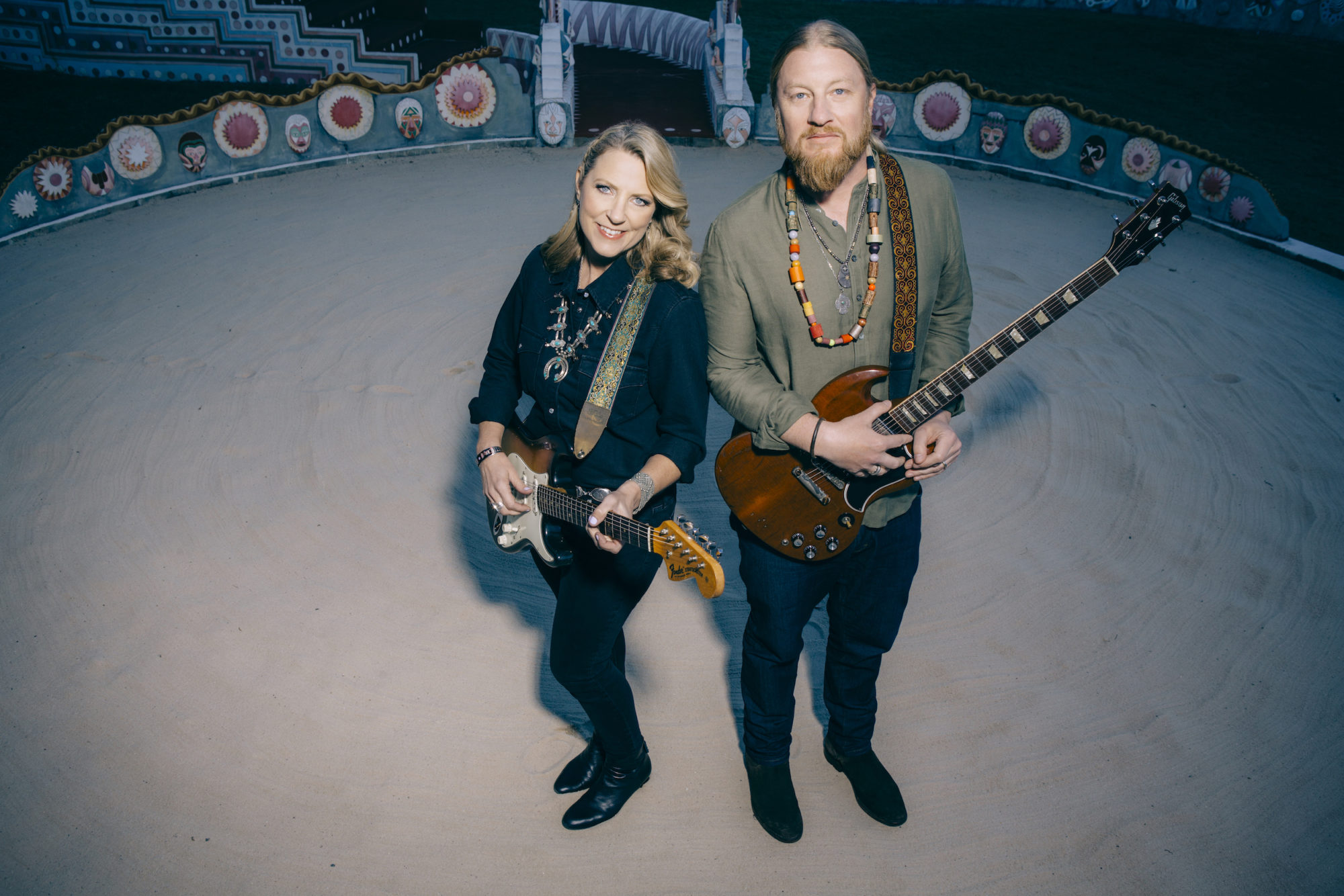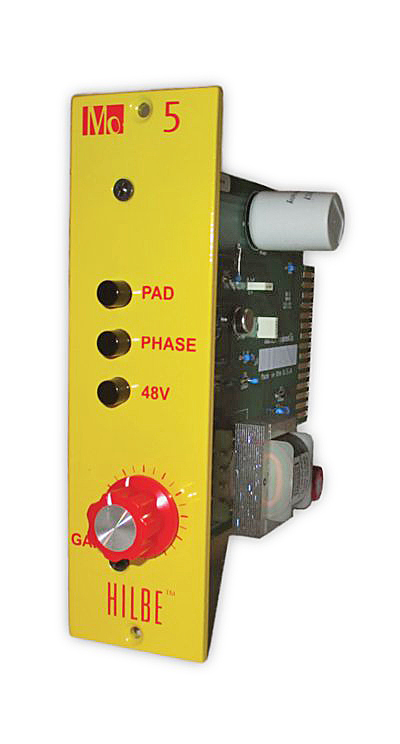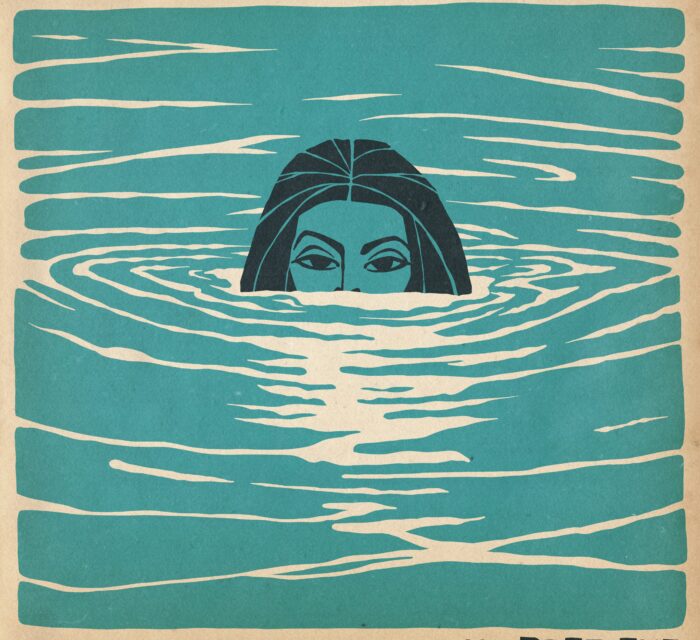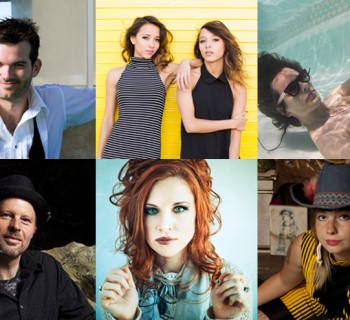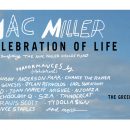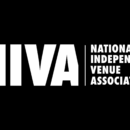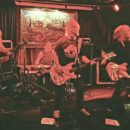“If your live show is boring, you lack energy, or you are missing cues with your hype man and not performing all your lyrics, the crowd will be less engaged and become uninterested in you as an artist, most likely forgetting your name after the next performer.”
Before you consider doing a live performance, rehearsal is crucial. I can’t express enough how critical it is to be prepared to go on stage in front of an audience. Just because you can record in a studio and perform in front of a camera for a video (remember these are edited for the best takes) doesn’t mean it will translate to a live show. The following article, taken from my recent book release, The Blueprint: The Bible For Becoming a Successful Performing Artist In The Digital Age.
Winning Over A&R, New Fans
A good live show that showcases your energy and can get the crowd involved can be that driving factor in winning over an A&R or industry representative, even if they have never heard your songs before. If you can captivate a crowd that may or may not know who you are, you have just created a fan base that will now stream your music purely from the fact they loved your live show. The opposite holds true as well, if your live show is boring, you lack energy, you are missing cues with your hype man and not performing all your lyrics, the crowd will be less engaged and become uninterested in you as an artist, most likely forgetting your name after the next performer.
What are some of the ways you can rehearse? You may think this is a simple question to answer, but I have seen a laundry list of artists who not only rehearse wrong, but that don’t know where to start when it comes to rehearsing. Of course, rehearsal is different for a one man show than it would be for a full band. For a one man show, you will most likely have a DJ to accompany you, playing your songs, with different cues of when to play the next record and different drops to keep the audience engaged. Most artists also have a hype man to keep the energy up during the performance. However, it is also possible that for your first few appearances you are performing alone, in which case it is best to practice stage presence, so you are not standing in one place, but rather working the entire stage, and engaging with the whole crowd.
Make sure that the echo is added on just the right word. Make sure that the lights are soft or colored or spotted or bright, so the music is accented at the right place in a song. Make sure that your show, in addition to your music is the best that it can be.
Here are a few of the things to work on after you have the song performance perfect:
•The transition from one song to
another in the set
• Audio effects of volume rides
•Lighting cues for mood and
dramatic effect
• Guitar or costume changes
• Staging cues and scenery/gear changes
•Where you’ll be speaking with
the audience
Even if you don’t have a sound or lighting person, at least if those items are thought out your show will be better. Plus, you can always give notes to the venue sound and lighting people where you gig, who will probably appreciate the challenge and respect your professionalism. Just keep everything simple so it doesn’t get confusing.
If you’re inserting new production into your show, it is best to do a dress rehearsal before you take it to the stage. Play your set just like you would at the gig, complete with full lights and sound production, speaking to the audience, and any costume and guitar changes.
Play the songs as if you were performing. Don’t stop and don’t try to fix anything. It is what it is, and you’ll learn a lot more from doing it this way than just normal rehearsing. After the set, talk over any areas of concern and generally debrief so you can make a list of problems and start right in on fixing them. It really doesn’t take much to change a gig experience to a show experience. Which one do you think the audience will find more entertaining?
Rehearsal with Your DJ
First, let’s begin with the DJ. You as the artists are dictating when you want the next song to play, when you want (if at all) there to be drops in the records by the DJ, if you want the DJ to be part of the performance (acting as your hype man and engaging with the crowd) or just in the background playing the records. These are all different roles the DJ must understand, as a missed cue or fumble in record change can hinder the entire performance. Rehearsal with your DJ to make these transitions flawless is tantamount in creating a great performance. Even if you as the artist is completely on point during your performance, if your DJ is not on the same page as you, how well you performed won’t matter.
The audience, in most cases, won’t see the DJ as the problem, they will only see a bad performance an attribute that to you as the artist and the performance (of course unless the DJ is working with all artists performing that night, and is messing up every performance, in which case then the audience might understand the DJ was bad and not the artists).
The Hype Man
Adding in the hype man creates another layer of synergy to your performance. The job of the hype man is to keep the energy up throughout the performance and emphasize what you are doing and saying as an artist. You and your hype man should be almost performing in tandem and have a pseudo routine in place for every step and song you plan on performing that night. They should know every word, line, and adlib to every song, and be prepared to emphasize what you are saying when you would like them too.
The hype man is essentially a live stack track, but also serves the purpose of keeping the crowd engaged while the artist is performing. A great hype man can take over a performance for an artist who maybe struggling on any given night. Flavor Flav for Public Enemy and Spliff Star for Busta Rhymes are recognized as some of the best hype men in hip-hop for how they were able to accompany their leading acts.
For live bands the rehearsal is exponentially more important, because now there are anywhere between three to sometimes 10 or more people playing instruments that all have different cues and aspects of what they are doing for each song. The lead singer usually creates the set list prior to the show, but I have seen singers take up until the last minute to hand out the set list to the band on what songs they will be performing that night. This is stressful for the band (yes, they should know all the cues for any songs that the artist wants to perform) but if the band doesn’t know what songs and in what order they will be playing that night, it could affect the performance.
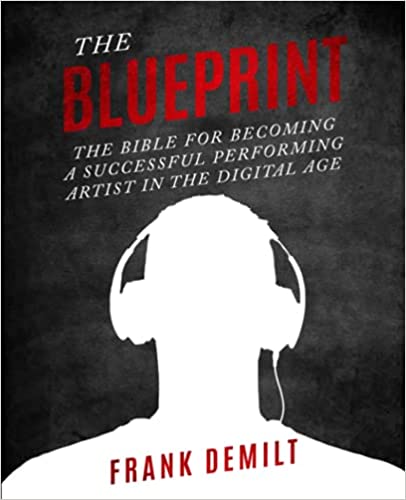
The Band
As a band, you should be rehearsing weeks and sometimes months leading up to the show, especially if you are doing multiple shows. It should be second nature for the singer and the band for each song that they could perform.
A few ideas to keep in mind while rehearsing:
1. Practice Makes Perfect
Some songs may need to be played repeatedly until you can lock in the pitch, muscle memory and timing of your performance. The more you play a song, the more natural it becomes. And, sounding natural is very important in playing live instruments and singing. After all, if you are uncomfortable, most likely your audience will pick up on it. That’s usually when people start walking away and looking at those cell phones. Audiences want to watch something or someone that transports them and not remind them of their own insecurities. By learning how to do something with your eyes closed, without looking, without thinking about it, you are creating a performance that truly is astonishing, because you are witnessing someone do something creative and powerful, with seemingly little effort. Practice those problem songs repeatedly until those songs sound unanimously better. If they never do, put in a song that makes the set better than the one replaced. Just be nice about it.
2. Practice Your Transitions
A lot of new performers do not factor in the power and preparation time available in between songs in a set. There are often little things like guitar exchanges, patch settings and even patch cables that need to be rerouted between songs. If this applies to you, start planning and practicing these changes just like you are going to do them on stage. By practicing these kinds of button presses, placing patch cables in easy to find places, and finding nice stable methods of placing your extra guitars on stage, you’ll ensure smooth song transitions and safe gear!
3. Video Record Your Practices
What we hear and see in our heads and what is being played and performed can often be in opposition. The camera is always willing to tell the truth. Knowing what you really look and really sound like is terrifying for many. But if you can get past the fear of facing your own physical manifestation in this world, you’ll be on the road to not only a great show but becoming more comfortable with your own physicality–an attribute often regarded as extremely attractive. By recording video performances of yourself, you can begin to learn what works and what doesn’t work with what you are doing live. You can start altering those quirks and ticks that are throwing off the show.
I will highly recommend watching the performances with band mates, as well, if this applies to you. Everyone needs to know and hear what they look like. It’s not meant to push someone’s nose down in it. It’s meant to help someone grow, by facing what they are putting out into the world with posture, facial expression, conviction, and performance.
Larry Butler, (Ry Cooder, Randy Newman, Isaac Hayes, U2, Van Halen, ZZ Top) is a former Warner Bros. Records in-house tour manager and Artist Development Director and VP of Artist Relations. He is also the author of The Singer-Songwriter Rule Book and has this to say regarding rehearsal and touring:
“Practice is learning the material and running through each song, step by step. Rehearsal is preparing for a live show. You should do both enough times so you can play and perform without thinking about it. Rehearsal is putting it all together and making a show of it. In fact, Paul Simon said, “The show is too important not to rehearse.”
You need to be organized and have a plan. Remember, a live show is visual so you must incorporate those elements. Know what you want to do and run through it to make it as entertaining as possible. If you’re not paying attention to the visual aspects of your performance, it’s not a rehearsal—it’s practice. Sometimes artists forget that people are watching them. It’s not about simply playing live—it’s about putting on an entertaining show.
Everything you do on stage should be scripted. That’s what the pros do. Walking around aimlessly does not engage an audience. If you don’t want to choreograph your movements—well, then welcome to the world of amateurs. If you want total strangers to appreciate your music, play it live to see what works before you spend the time and money to record it. Sometimes magic happens. Most often that occurs because of rehearsal and experience. Everything clicks and works together. But that only happens after you’ve rehearsed enough and are aware enough to recognize it.”
Cindy Mizelle, (Bruce Springsteen, Whitney Houston, Dave Matthews, Alicia Keys, Rolling Stones) who has worked with many legendary artists, contributed her vocal talents to over 120 albums. She has also written songs for other singers, such as Aretha Franklin. She’s toured with “The Boss” as part of the “Seeger Sessions Band” and on the “Wrecking Ball Tour,” and she has this to say regarding rehearsal and touring:
“In recording sessions, it’s rare to get material beforehand. You might even be asked about arrangements when you show up. So, I try to research everything about the artist I’m going to work with. I try to find every version of their songs to see how they’re different. That way I’m prepared for whatever comes.
Tour rehearsals typically last eight hours or more. You read through the lyrics and get a feel for the music and the show. Then, you’ll run through the songs, usually 12 or more with alternative arrangements. You might also script moves for different songs. It takes a lot of concentration and energy. I find it helpful to take notes, so I know what I need to do.
There are a lot of things that may not be written down, especially with live shows. Knowing things like the vibe of a song, its personality, and how it’s going to be presented are important considerations. That’s where live rehearsals can get intense.
“I’ve worked with a lot of artists who choreograph their shows. You work it out in rehearsal so that the performance is tight, exciting, and entertaining. Luther Vandross and Whitney Houston planned every move on stage. That’s what professionals do.
“When you rehearse properly, you become aware of the dynamics each person brings to the mix. You need to be sensitive to the artist you’re supporting and know what they need from you. You need to be a team player.
That’s where rehearsals pay off. There are so many things to deal with on the road, the itinerary, your hotel information, the sound check, the production…all the little details that are part of a tour. You shouldn’t have to think about your performance on stage too. It should be automatic, you know it, you live it, you do it.
If you’ve rehearsed enough, you can enjoy the show along with the audience. If you’re on top of it, you can see what’s out there and, often, that will elevate your performance.”
Briana Lee, (Katy Perry, Elvis Costello, John Legend, Nick Jonas, Thirty Seconds to Mars) has been featured in Disney’s The Little Mermaid Live and La La Land Live in concert at the Hollywood Bowl. Currently, she’s expanding into more roles as a vocal arranger, producer, and vocal contractor for television and other media, has this to say regarding rehearsal and touring:
“The biggest difference between recording sessions and live rehearsals is what’s expected of you. I often go in blind to recording sessions. You don’t always get material until you’re there. But, for live work, you can do research online and see what they’ve done before.
If you don’t practice, you won’t learn the material. If I’m doing sessions or prepping for a tour, my world revolves around practice—everything else shuts down. I’ll lay out the lyrics on the floor and learn the emotional content of each song as well as the music.
“Most of the time rehearsing for a live show can take anywhere from two days to a few weeks. It depends on the project and how complex the production is. There is also practice involved, working out arrangements and harmonies, which takes up additional time.
You would think that a rock act would be less formal and looser. But Jared Leto is very focused. He knows exactly what he wants. He pays attention to every little detail. He knows how he wants the songs to sound, how he wants to present them on stage, and how the overall production should look.
“A lot of artists choreograph their show in rehearsals. Not so much for dance moves, but just movement in general and where you need to be on stage. Movement is always a big part of a live performance.
“If there’s no plan or organization, it wastes a lot of time. You need to know what you want to do. If people bring problems or disputes into rehearsal, it can affect everyone.”
Your Live Show
Now you’re at the point where you have rehearsed with your DJ, band and hype man and are ready to start doing the live shows. So, let’s speak a little on the difference in the local live shows I briefly mentioned above that are good starting points for new up and coming acts. As a new artist it is maybe a little difficult at first to get paid to do performances, so there are a few options for different types of shows, gigs, and events that are going to be beneficial for you as a new artist. Paying to perform, selling tickets to perform, talent shows, local festivals, showcases and possibly putting on your own shows/events are all good places to start.
First, is paying to perform. As a new act it is unlikely that hosts will ask you to perform on their bills, and most times you will have to pay for your performance slot. The price range on this will vary depending on the show type, the venue, the popularity of the show, and who the headliner is (if there is a headliner). Local shows generally range anywhere from $10-$100, and this will get you on as an opening act (usually with a handful of other opening acts who also paid to be there) where you will have a specific amount of time to perform (somewhere between 3-7 minutes is the average).
Sometimes these shows serve the specific purpose of showcasing local talent to patrons of the venue hosting the showcase (usually a bar or night club) which can sometimes include (and if they do the flyer usually promotes this) industry representatives and A&Rs. These are a good place to start (even though you have to pay to perform) as you will be able to get your name out there not only to a new audience, but to the event hosts (who based on your performance and crowd reaction could invite you to perform at some of their upcoming events) and some of the other performing artists, with whom you can make connections, create relationships and do collaborations in the future.
Second, are the ticket shows. This entails the artist paying for several tickets they then must sell to perform. If you don’t sell the tickets, you can’t perform and you lose the money you paid for the tickets and your slot on the show. There is a benefit to these types of shows, as normally the artist gets to keep a certain percentage of the profits from the tickets they sell, (usually somewhere between 10%-20%) and this usually guarantees at least a certain number of your fans to attend your performance, which can increase crowd participation, stacking the odds in your favor for a better reaction to your performance. This can also enhance your opportunities with the promoter for future performances if you are able to sell all your tickets. If you show that you can bring out a crowd to these types of events, the promoter is more likely to invite you back to future events because they know you will bring and/or draw a crowd.
Third, is the talent shows. These are usually specific to high schools and colleges but are sometimes offered by different promoters and local studios as well. If it is through a school, being a student can usually get you a slot and there is nothing else to it (however, sometimes these school events will allow outside acts to perform, for a price, which can be beneficial as well). If it is not a school function, you most likely must pay a fee to perform, as you will be performing (in most cases) in front of industry personnel as well as a crowd. These types of opportunities can lead to further showcases and meetings with the industry people in attendance. These talent shows generally allow for the artist to showcase their best song and a brief introduction to who you are as an artist and where they can find you and your music online. Have your best song ready.
Fourth, is the showcases. These are put on by various promoters to find emerging talent. You will always have to pay to perform at these types of events; however, at the same time there will always be at least one or two label reps in attendance scouting the talent. These showcases are strictly for the purpose of finding emerging talent for the industry representative to either keep an eye on or create a relationship with for future work. Most of the time you will not get signed based off your performance at these showcases, but you will get your music heard by label representatives, who can put you in meetings and connect you with the right people to further your career, all for the final goal of making you apart of their label in some capacity.
Fifth, is the local festivals. Most towns have a park or designated area where each season they will host a certain type of festival (generally in the spring, summer and fall). These festivals almost always have live performances on a center stage, either throughout the entire day (or weekend) or at specific times during the festival activities. As a local act you may be able to get on as a performer in a variety of ways. Knowing the festival host, knowing a promoter through the festival, paying for a performance slot, or simply being a local act can afford you an opportunity to perform. However, be mindful of the type of festival it is, as this could affect the crowd reaction you get. It may not always be in your best interested to perform at a certain type of festival if the audience you are going for will not be in attendance. However, on the flip side of the coin, performing for a different crowd can be beneficial as well, as it will open your music up to an audience that otherwise may not listen to your music.
Lastly, you can put together your own event. This can be a bit costly and little tricky. Not every venue is open to all audiences and all music genres and age groups. Once you do find the right venue, you will have to pay for the time you would like your event to happen, (the longer the event, the more money it will cost) and in most cases you will have to pay at least half of the deposit up front (this will be nonrefundable, so if anything happens that forces your event to be canceled, other than possible a natural disaster, you will not get your money back). However, if you are throwing the event, this affords you the opportunity to generate money to both cover the overall cost to throw the event and to make a profit. By doing some of the various show options mentioned you can make money. You may also be able to work out a deal with the venue owner: since you are throwing an event in their space, and bringing in a certain number of people who otherwise may not come to this venue, perhaps you and the venue owner could split the door and/or bar profits for the night. Be careful, though, as you will be responsible for all parties attending your event, and anything that happens to the venue will be your financial responsibility.
I recommend you do research on the events in your area and some of the hosts and promoters, because not all will be beneficial to you as an artist, and some promoters look to take advantage of new naive artists. If you do start performing live, be sure to have all your rehearsing on point and put on the best show you possibly can. •
FRANK DEMILT
(@frankademilt) has since 2013 worked in some of the top music studios in New York City, New Jersey, Miami, and Atlanta alongside the industry’s top Grammy- and Emmy-winning and -nominated artists. Beginning as an engineer at Soul Asylum Studios in Atlanta, he has since worked in various sectors of the music business. Recently, Demilt was named head of Artist Development, Sync Manager, and lead A&R at Water Music Publishing. He’s also helped launch the creative agency Sloppy Vinyl, a premier artist development and entertainment company in New Jersey. His book can be purchased at The Blueprint: The Bible For Becoming a Successful Performing Artist in the Digital Age (Amazon).

